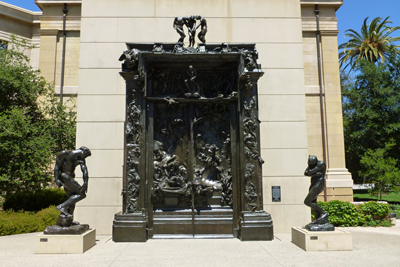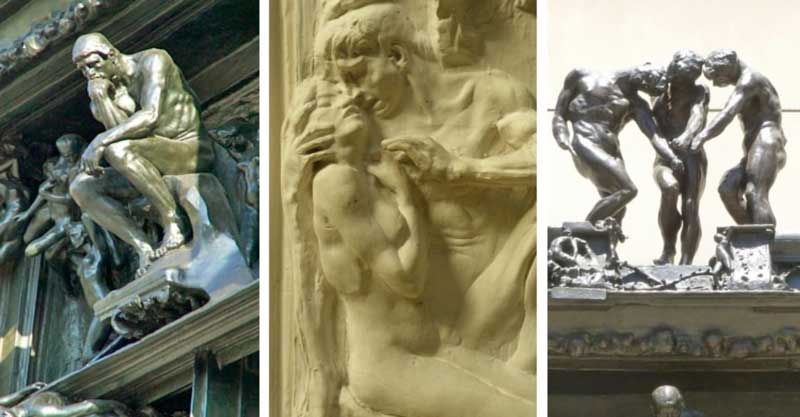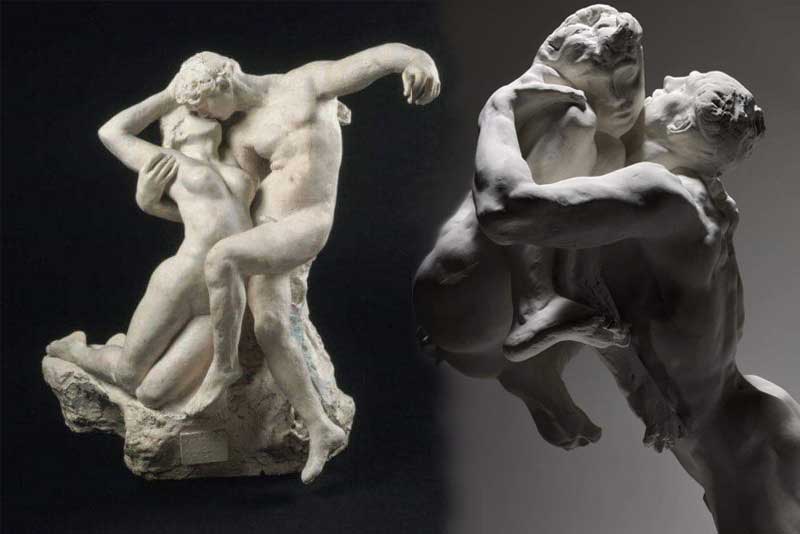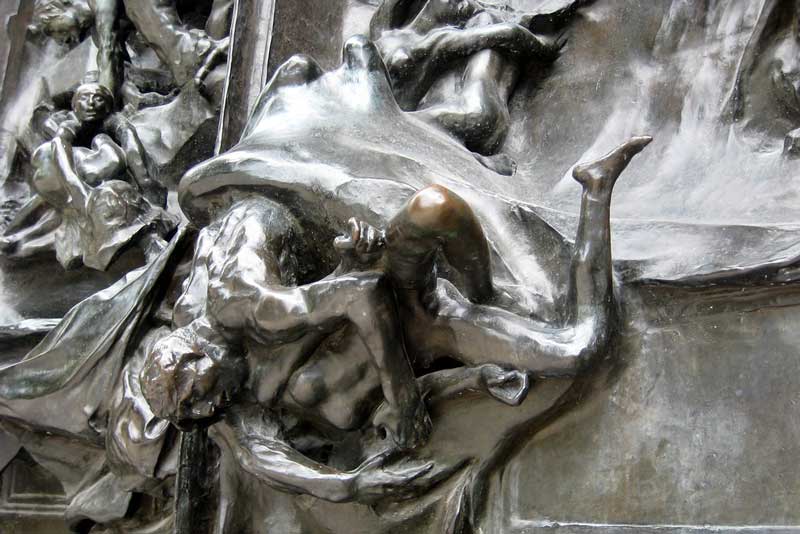
The Gates of Hell, a colossal double door sculpture that stands at a towering 20 feet, is the master creation of the famous French sculptor Auguste Rodin. In 1880, he was commissioned for the first time by the French state to design a pair of monumental bronze doors for a new museum of decorative arts. Rodin unhesitatingly accepted the proposal and planned to create a huge piece based on the first part of the Divine Comedy, the 14th century epic poem by Dante Alighieri. From 1880 until his death in 1917, Rodin worked on the project and during that time, he constantly changed and re-worked his design.
It is considered by many that, the Gates of Hell was aesthetically influenced by Ghiberti’s Gates of Paradise, a pair of gilded bronze doors decorated with relief sculptures of Biblical scenes, Michelangelo’s immortal fresco the Last Judgment in Sistine Chapel and probably Delacroix’s painting the Barque of Dante.

The huge piece, known as the Gates of Hell is crowned with the figures of the Three Shades, the souls of the departed who points to the warning ‘Abandon every hope, who enter here’, while under them sits the Thinker, originally known as the Poet, as it was supposed to represent the poet Dante. Below, the whole surface of the gates undulates with figures of lovers and sinners, the cannibal Ugolino, as well as damned souls hanging on by their fingers to the lintels of the doors or plunging over its sides. In fact, most of the famous statues of Rodin - The Thinker, Eve, Eternal Springtime, The Kiss, The Prodigal Son and The Crouching Woman - all had their origins in The Gates of Hell.


Sex is dominantly present in the huge show of the Gates of Hell, which shifts from the lyrical eroticism of Eternal Springtime and The Kiss to near-pornographic studies of nude models performing acrobatics and sexual acts. The two-figure group appeared in 1880 at the top of the right-hand pilaster of The Gates of Hell, is a combination of Crouching Woman and Falling Man. Also known as The Abduction, Carnal Love or The Cat, the group began its life as an independent sculpture circa 1882.These later drawings and plaster studies feel like a prolonged form of foreplay meant for the delectation of an artist who was notorious for having sexual relations with the women who posed for him.



Unfortunately, the Decorative Arts Museum, for which the composition of the Gates of Hell was commissioned, was never built and the gates themselves were never cast in bronze during Rodin’s lifetime. Rodin used to work on this project on the ground floor of the Hôtel Biron. In 1919, two years after his death, it became the Musée Rodin housing a cast of The Gates of Hell and related works.